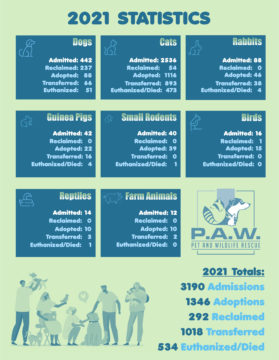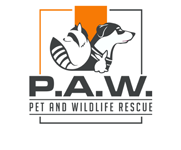2021 Statistics from our shelter
Ever wondered how many animals come through our doors every year? Well wonder no more! We have compiled our 2021 numbers and are happy to share them with you.
Some of the data is self explanatory such as intake and adoptions, but others such as transfers and euthanasia does require some shelter knowledge so we have included more information below.
TRANSFERS
An open admission shelter takes in any animal in need, including very elderly, ill, aggressive, or injured animals that may not be able to be rehomed. As an open-admission municipal shelter in a rural setting, we are inundated with thousands of stray animals each year, more than we have room to care for.
Between April to November each year, we can intake over a hundred animals each week. Realistically, this is more than we can adequately house, provide vetting for, and adopt out in time to make space for a similar number of new animals in need the following week.
In 2021, we transferred 1018 animals out to other Canadian shelters and rescues, 90% of these animals were transferred due to limited space and overcrowding in the summer months and 10% was due to special medical/behavioural needs.
Having a large network of transfer partners has given us breathing room to focus on special needs animals in our care, limit overcrowding, intake new stray animals, and ultimately save thousands of lives. These partners have more vetting availability and many adopters waiting for animals. We are exceptionally grateful for our rescue partners that are able to welcome our animals into their care when we are out of space.
DEATH AND EUTHANASIA
We are a target-zero shelter, meaning that our ultimate goal is a zero percent euthanasia and death rate. Our staff work tirelessly to ensure that we do everything possible for the animals in our care to see them thrive and achieve a high quality of life. Despite best efforts, there are some medical and behavioral circumstances beyond our control that result in death and euthanasia.
In 2021, our total euthanasia rate was 16% of our intakes. The minority of these cases are attributed to behavioural problems (such as under-socialization and aggression) that led to these animals not being suitable for adoption or transfer due to safety concerns. The majority of our euthanasia rate was attributed to medically severe cases or medical emergencies that were untreatable or if treated would not result in a high quality of life. At our shelter, we do not euthanize for space; we euthanize only at the discretion of our veterinarian or behavioural team.
Additionally, one of the services we offer to the public is euthanasia and cremation. We have year-round requests for euthanasia based on veterinarian-advisement. In turn, these requests also contribute to our overall euthanasia rate.
We hope that this post will give you some insight into shelter life in Chatham-Kent. If you have questions or want to learn more you are always welcome to reach out at [email protected]



